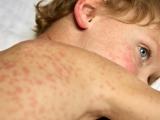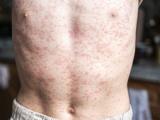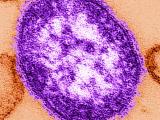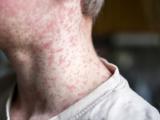The US Centers for Disease Control and Prevention (CDC) today in its weekly update reported 51 more measles cases, bringing the national total to 935 from 30 states, though most are part of a large outbreak with an epicenter in West Texas.
The nation is now experiencing 12 outbreaks, one more than the previous week, and 93% of illnesses reported are connected to outbreaks.
In related developments, CBS News reported yesterday that Health and Human Services Secretary Robert F. Kennedy Jr. would ask the CDC to develop new guidance for treating measles with drugs and vitamins. Today, the CDC posted new resources for public health departments and parents, along with a fact sheet for clinicians that covers two alternative treatments that Kennedy has pushed, including vitamin A, antibiotics, and inhaled steroids.
Kennedy continues push for alternative measles treatments
The vitamin A treatments that Kennedy has supported in the response to the Texas outbreak have put some kids in the hospital after they were given toxic amounts of the vitamin.
In the fact sheet, the CDC said vitamin A doesn’t prevent measles and isn’t a substitute for vaccination but has been shown to reduce measles mortality in children living in areas with high levels of vitamin A deficiency. “In the U.S., prevalence of vitamin A deficiency is very low,” the group said.
It added that vitamin A can be administered to infants and children with measles in the United States under the supervision of a health provider as part of “supportive management,” with age-specific daily dose limits.
“Overuse of vitamin A can lead to toxicity and cause damage to the liver, bones, central nervous system, and skin,” the CDC said. “Pregnant women should avoid taking high levels of vitamin A as it has been linked to severe birth defects.”
The CDC said there is no evidence for using antibiotics to treat measles, which is a viral disease. It notes that treatment decisions should be based on the clinical assessment of health providers. As for inhaled steroids, the CDC said they are useful for patients who have a history of reactive airway disease and again said use should be based on individual decision-making by health providers.
More cases in West Texas outbreak
The Texas Department of State Health Services (TDSHS) today reported 20 more cases since its last update on April 29, lifting the state’s total at 683. Three more counties reported cases linked to the outbreak, putting the total at 29.
One of the newly added counties is Upshur County in the eastern part of the state. Some cases from Upshur County were reported in mid-April, but it wasn’t clear if they were linked to the West Texas outbreak.
Of the 683 cases reported from Texas, 396 are from the Gaines County hot spot. Of the state’s total, 653 patients were unvaccinated or have an unknown vaccination status. So far, 89 people have been hospitalized since the start of the outbreak, and the number of deaths remains at 2.
In a related development, the New Mexico Department of Health (NMDOH) reported one more case, which involves a resident of Dona Ana County, raising the state’s total to 67 from four counties.
The NMDOH today in a separate statement warned that summer means more visitors and community events, which come with more chances of exposures. Chad Smesler, MD, New Mexico’s acting state epidemiologist, said, “More people traveling in the summer emphasizes the importance of keeping you and your loved ones safe with the best-known protection--the MMR [measles, mumps, and rubella vaccine.”
He also urged organizers of large events and summer camps to encourage participants to be up to date with MMR vaccination.



















